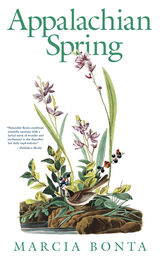
Marcia Bonta is a naturalist-writer who has lived for decades on a five-hundred-acre mountaintop farm in Central Pennsylvania. In Appalachian Spring, the intricacies of the season unravel day by day in journal entries that combine Bonta’s own meticulous observations with the research reported by botanists, entomologists, and other natural scientists.
Every aspect of the natural world catches her eye, from the life cycle of a tent caterpillar to the sex life of jack-in-the pulpit. She hopes, by recounting such wonders, to convert others to what she calls the “third stage” in humanity’s relationship with nature, that of empathy with all of nature for its own sake: “To know the earth better, to grasp a little of its workings, to look on it with awe and wonder as well as with respect, is to want to save it from destruction.”


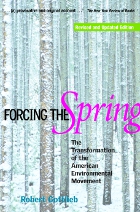
This revised edition extends the groundbreaking history and analysis of Forcing the Spring into the present day. It updates the original with important new material that brings the book's themes and arguments into the 21st century, addressing topics such as: the controversy spawned by the original edition with regard to how environmentalism is, or should be, defined; new groups and movements that have formed in the past decade; change and development in the overall environmental movement from 1993 to 2004; the changing role of race, class, gender, and ethnicity in today's environmentalism; the impact of the 2004 presidential election; the emergence of "the next environmentalism."
Forcing the Spring, Revised Edition considers environmentalism as a contemporary movement focused on "where we live, work, and play," touching on such hot-button topics as globalization, food, immigration, and sprawl. The book also describes the need for a "next environmentalism" that can address current challenges, and considers the barriers and opportunities associated with this new, more expansive approach.
Forcing the Spring, Revised Edition is an important contribution for students and faculty in a wide variety of fields including history, sociology, political science, environmental studies, environmental history, and social movements. It also offers useful context and analysis for anyone concerned with environmental issues.

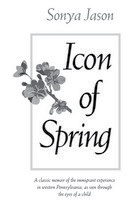
A realistic but fond memoir of a girlhood lived in a coal camp, or “patch” in southwestern Pennsylvania during the Great Depression of the 1930s, Icon of Spring is also a coming-of-age story. It begins in 1932 when the narrator, the child of Carpatho-Rusyn immigrant parents, is seven years old. Her father is a miner, and work is scarce as the grip of the depression tightens. The jars of canned food on the storeroom shelf are dwindling, and the family fears eviction from their small company-owned house.
Icon of Spring recounts her childhood during the next seven years, as she grows to adolescence in a world that is protective within her family but shares the violence of the coal region. She is witness to accidental death in the mines, the murder of a coal and iron policeman, the muted struggle to unionize, and the itinerant beggars who appear at the back door.
Yet this is far from a grim book, for we see life in the patch through the eyes of the child. Warmed by the closeness she feels toward her parents, especially her mother, and her nine brothers and sisters, she knows the joy of one sister’s wedding and raucous reception, the mysterious Easter ritual of the Eastern Orthodox Liturgy, the fun of attending a medicine show, and the almost incandescent hope placed in the new president, Franklin D. Roosevelt. Her life is peopled by traveling peddlers, the priest of her church, a union organizer, and the town bachelors: Big John, Peg Leg Pete, and Shorty Steve.
Icon of Spring evokes life in a depression coal patch from a female perspective. A splendid memoir of childhood told with accuracy and warmth which is also rich in social history, it will appeal to general readers as well as students.
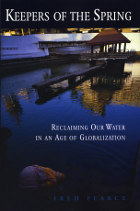
Water has long been the object of political ambition and conflict. Recent history is full of leaders who tried to harness water to realize national dreams. Yet the people who most need water-farmers, rural villages, impoverished communities-are too often left, paradoxically, with desiccated fields, unfulfilled promises, and refugee status.
It doesn't have to be this way, according to Fred Pearce. A veteran science news correspondent, Pearce has for over fifteen years chronicled the development of large-scale water projects like China's vast Three Gorges dam and India's Sardar Sarovar. But, as he and numerous other authors have pointed out, far from solving our water problems, these industrial scale projects, and others now in the planning, are bringing us to the brink of a global water crisis.
Pearce decided there had to be a better way.
To find it, he traveled the globe in search of alternatives to mega-engineering projects. In Keepers of the Spring, he brings back intriguing stories from people like Yannis Mitsis, an ethnic Greek Cypriot, who is the last in his line to know the ways and whereabouts of a network of underground tunnels that have for centuries delivered to farming communities the water they need to survive on an arid landscape. He recounts the inspiring experiences of small-scale water stewards like Kenyan Jane Ngei, who reclaimed for her people a land abandoned by her government as a wasteland. And he tells of many others who are developing new techniques and rediscovering ancient ones to capture water for themselves.
In so doing, Pearce documents that these "keepers" are not merely isolated examples, but collectively constitute an entire alternative tradition of working with natural flows rather than trying to reengineer nature to provide water for human needs.
The solution to our water problems, he finds, may not lie in new technologies-though they will play a role-but in recovering ancient traditions, using water more efficiently, and better understanding local hydrology. Are these approaches adequate to serve the world's growing populations? The answer remains unclear. But we ignore them at our own peril.

Raven and River leads young readers on a fantastical journey with a raven across the icy Alaska landscape on the verge of spring. Along the way, the raven’s sonorous cry wakes a cast of sleeping woodland creatures, including a bear, a beaver, a hare, and a squirrel—all of whom join him in imploring the still-frozen river to melt and thereby initiate the change of seasons. Packed with information and featuring vibrant full-color illustrations by Jon Van Zyle, Raven and River brings to life these two important harbingers of Alaska’s spring.
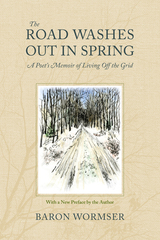
For nearly twenty-five years, poet Baron Wormser and his family lived in a house in Maine with no electricity or running water. They grew much of their own food, carried water by hand, and read by the light of kerosene lamps. They considered themselves part of the “back to the land” movement, but their choice to live off the grid was neither a statement nor a protest: they simply had built their house too far from the road and could not afford to bring in power lines. Over the years, they settled into a life that centered on what Thoreau would have called “the essential facts.” In this graceful meditation, Wormser similarly spurns ideology in favor of observation, exploration, and reflection. “When we look for one thread of motive,” he writes, “we are, in all likelihood, deceiving ourselves.” His refusal to be satisfied with the obvious explanation, the single thread of motive, makes him a keen and sympathetic observer of his neighbors and community, a perceptive reader of poetry and literature, and an honest and unselfconscious analyst of his own responses to the natural world. The result is a series of candid personal essays on community and isolation, nature, civilization, and poetry. Lovely and rich, The Road Washes Out in Spring is an immersive read. A new preface by the author rounds out this new edition.
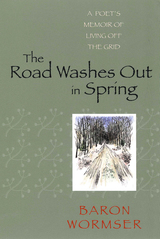
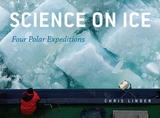
An oceanographer and award-winning photographer, Linder chronicles four polar expeditions in this richly illustrated volume: to a teeming colony of Adélie penguins, through the icy waters of the Bering Sea in spring, beneath the pack ice of the eastern Arctic Ocean, and over the lake-studded surface of the Greenland Ice Sheet. Each trip finds Linder teamed up with a prominent science journalist, and together their words and pictures reveal the day-to-day details of how science actually gets done at the poles. Breathtaking images of the stark polar landscape alternate with gritty, close-up shots of scientists working in the field, braving physical danger and brutal conditions, and working with remarkable technology designed to survive the poles—like robotic vehicles that chart undersea mountain ranges—as they gather crucial information about our planet's distant past, and the risks that climate change poses for its future.
The result is a combination travel book and paean to the hard work and dedication that underlies our knowledge of life on earth. Science on Ice takes readers to the farthest reaches of our planet; science has rarely been more exciting—or inspiring.
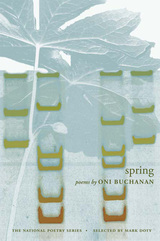
Representing nothing less than a tour-de-force of formal invention and emotional intensity, Oni Buchanan’s Spring encompasses radically contrasting work. Ecstatic, visually intricate rhapsodies are juxtaposed with tight, sonnet-like poems, and wispy columns of verse brush up against large-scale epics and kinetic text. This collection’s point of departure is the paradox of existence as an individual in a political and violent world. All of the formal innovations in this book have in common an urgent need for texture and polyphony, and the poems attempt to discover how to fulfill the individual human responsibility of surviving as a resiliently loving and hopeful living creature. An accompanying multimedia compact disc offers a full Flash-animated version of the printed kinetic work, “The Mandrake Vehicles.”
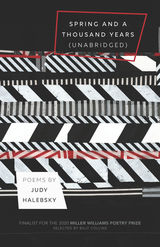
A translator’s notebook, an almanac, an ecological history, Judy Halebsky’s Spring and a Thousand Years (Unabridged) moves between multiple intersections and sign systems connected in a long glossary poem that serves as the book’s guide to what is lost, erased, or disrupted in transition both from experience to written word and from one language, location, and time period to another.
Writers Li Bai, Matsuo Bashō, Sei Shōnagon, and Du Fu make frequent appearances in centuries ranging from the eighth to the twenty-first, and appear in conversation with Grace Paley, Donald Hall, and Halebsky herself, as the poet explores subjects ranging from work and marriage to environmental destruction. Asking what would happen if these poets—not just their work—appeared in California, the poems slip between different geographies, syntaxes, times, and cultural frameworks.
The role of the literary translator is to bring text from one language into another, working to at once shift and retain the context of the original—from one alphabet to another, one point in time to another. These are poems in homage to translation; they rely on concepts that can bridge time and space, and as a result are as likely to find meaning in donuts or Zumba as they are to find it in the ocean. Spring and a Thousand Years (Unabridged) finds reasons for hope not in how the world should be, but in how it has always been.
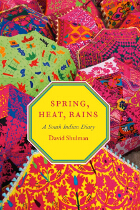
READERS
Browse our collection.
PUBLISHERS
See BiblioVault's publisher services.
STUDENT SERVICES
Files for college accessibility offices.
UChicago Accessibility Resources
home | accessibility | search | about | contact us
BiblioVault ® 2001 - 2024
The University of Chicago Press









